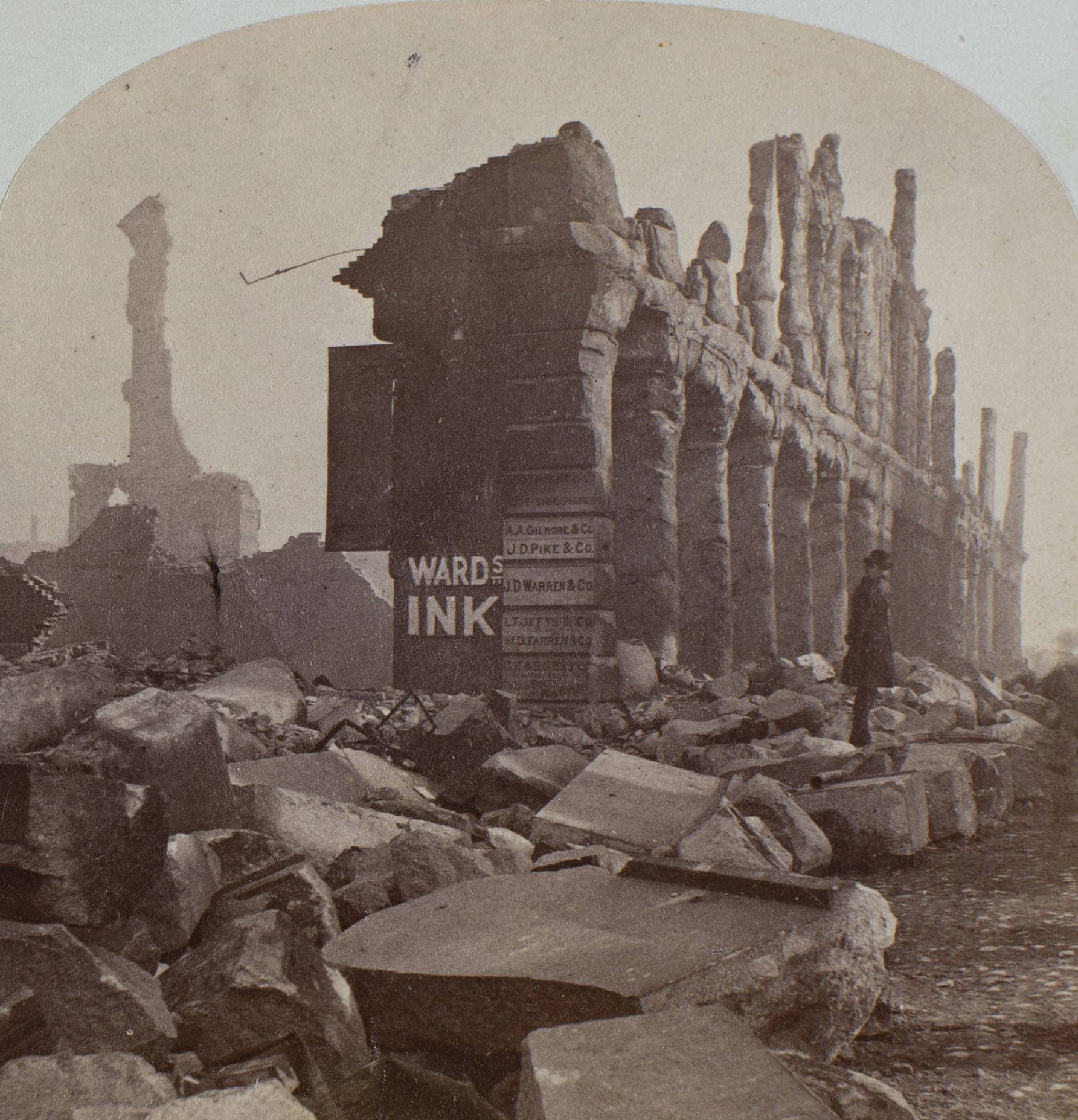Advertisement
Hidden History
New exhibit will examine the lasting legacy of the Great Boston Fire of 1872

A new exhibit opening on April 7 at the Boston Athenaeum explores the impact of the Great Boston Fire of 1872. The blaze burned for 12 hours, burning down nearly 800 buildings and causing billions of dollars in damage in today's figures.
Boston historian and author Anthony Sammarco and Christina Michelon, associate curator of special collections at the Boston Athenaeum joined us to talk about the fire and the exhibit called "Revisiting the Ruins: The Great Boston Fire of 1872"
Below are highlights from their conversation, which have been lightly edited.
Interview Highlights
On why this fire isn't as widely known as other "great" fires in history:
Michelon: "My working theory is that Chicago really benefited from this moment, this usable past, if you will, to kind of chart a new history for the city. It was a younger city in a way. It used the fire to kind of tell this Pheonix-rising-from-the-ashes story.
"I think for Boston, there is so much history regarding the Revolutionary War, regarding all of these other sites that were seen as historic in the city, that that's kind of the history that gets told more often. I think the rebuilding happened so quickly in Boston that people who are really interested in sort of urban development, urban planning and the city know the story.
"But, you know, there are objects in the show that talk about one building in particular that was a factory that burnt down in 1872, but it's described as Benjamin Franklin's birthplace, which ... that building burnt down many years before the Boston fire, actually. But that's the narrative that is often told. And so we miss this Boston fire story."
Advertisement
On how the fire changed Boston:
Sammarco: "After the fire, the city of Boston took a concerted effort to look at the burnt district and learn from it. Immediately, they appointed a city architect for the city of Boston, and George Cluff would actually oversee the rebuilding not just of the burnt district, but of all buildings in the city.
"So whether they were schools, municipal buildings, fire stations, police stations, they had to actually have code. They not only had to have fire and party walls, they could no longer use a wood truss Mansard roof, which basically had spread the fire tremendously and very quickly.
"But it was also the fact that rebuilding in downtown Boston would only be by brick or stone — limestone, marble, granite. But the granite was so intensely affected by the fire that it imploded; it simply broke.
"And I think one of the things is that people realized in some instances the intensity of the fire — not only of the heat, but that it could be seen as far as the Blue Hills in Milton — showed the magnitude of this fire. I mean, 65 acres was burning and many people really perceived that the entire city was going to be destroyed.
"And it was something in some ways that was not just cataclysmic, but it was something in some ways that was eventually spoken about by ministers and priests and the city of Boston and the ensuing Sundays that one could learn from the lessons of greed and avarice as well as inept architectural details."
On what people can expect from the exhibit
Michelon: "I think really at the heart of the show are a number of incredible photographs by James Wallace Black, a Boston photographer. And they are technical feats for the time that he made them in, they're mammoth-sized pictures. He made an incredible panorama that really just aims to show the magnitude of this destruction.
"But we're also seeing these images being translated into print and appearing in newspapers because at this time you couldn't print photographs in the newspaper. And so we're seeing the ways that people engaged with this material as newsworthy items that was covered internationally. We're seeing it published in British newspapers as well.
"We also have some incredible paintings, a sculpture, which I think will be a surprise for some folks. And one of the other exciting components is this opportunity to view stereo graphs, which are a kind of 19th century photograph. It's two identical images side by side that, when looked at through a stereoscope, merges the images and they become 3-D."
This segment aired on April 5, 2023.

